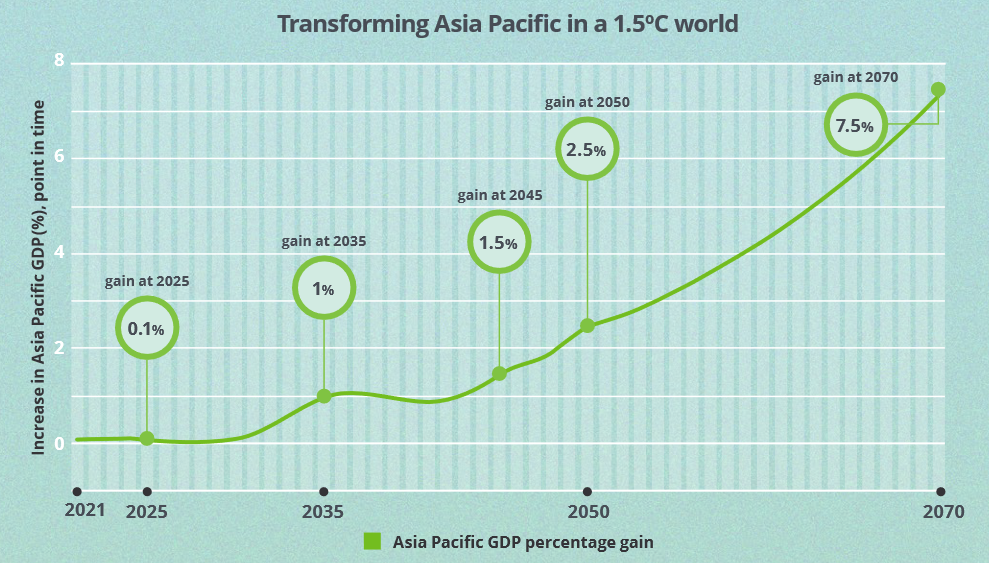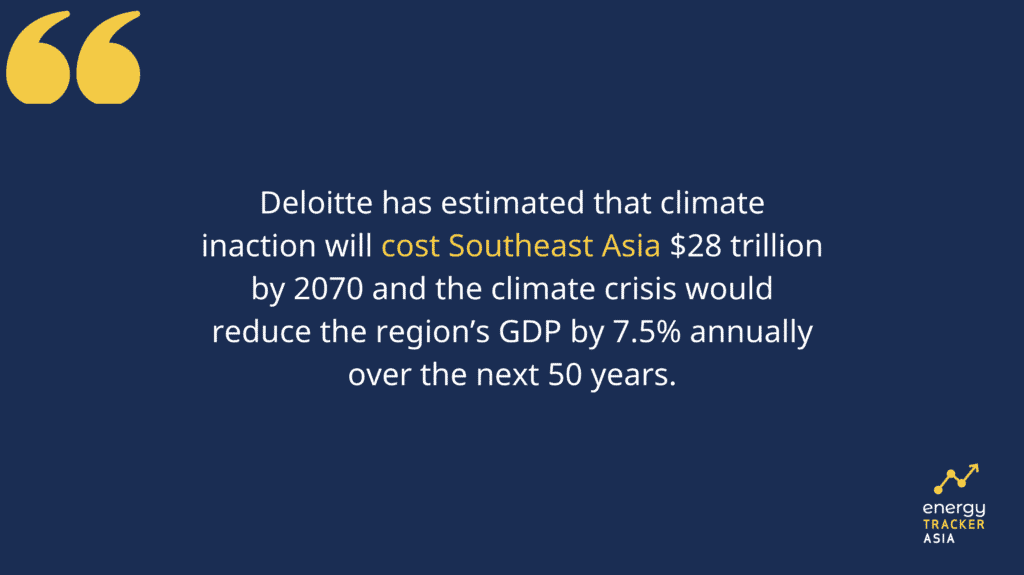The Cost of Sustainability for Asia is Lower than the Benefits
14 July 2022 – by Viktor Tachev Comments (0)
The comparison between the cost of sustainability and what the world stands to gain from the renewable energy transition in numbers paints a telling picture – the gains or benefits are worth it and are much needed for Asian countries. The energy transition should be perceived as an investment rather than a sunken cost. It can stimulate economic growth and is necessary for environmental protection.
The Benefits and Cost of Sustainability – the Clean Energy Transition in Numbers
There is a widespread narrative that the clean energy transition and sustainable business are costly and unaffordable for most developing countries. There are economic concerns alongside environmental concerns. However, crunching the numbers shows that the actual cost of sustainability isn’t as high as often proclaimed, especially considering the potential benefits.
Capital Investments Versus Long-term Gains
According to McKinsey, in a net-zero by 2050 scenario, China and Japan would have to spend 5.2% and 4.2% of their GDP on physical assets for energy from 2021 to 2050. In comparison, India would have to spend around 10.8%. The average for the remaining Asian countries is 9.2%.

The Asian Development Bank estimates that reaching regional renewable energy targets would require USD 290 billion in investment. According to different scenarios as discussed by the IEA, the figure is higher. Investment in Southeast Asia needs to reach between USD 350 billion and USD 490 billion for the period between 2025 to 2030.
Economic Growth
However, this investment will unleash long-term economic gains, mainly on two fronts: job creation and GDP growth.
Deloitte estimates that the energy transition will bring Southeast Asian nations an average annual GDP growth of 3.5% up to 2070. In total, the economic benefits of renewable energy and climate action will reach USD 12.5 trillion by 2070. For the Asia-Pacific region, timely climate action could deliver USD 47 trillion by 2070.

Regarding jobs, the International Labour Organisation acknowledges that the continent will be at the forefront of the energy market transformation. By 2030, Asia will create 14.2 million green jobs. According to IRENA, the majority of the 25 million green energy jobs to emerge globally by 2030 will be in Asia.
Savings
The energy system transformation will bring cost savings on several fronts, becoming a shield against the highly-volatile fossil fuel prices and taking advantage of affordable and stable clean energy supplies.
For example, according to the IEA, accelerating the clean energy transition is the key to reducing Asia’s energy security vulnerabilities and import dependence. On top of that, renewable energy is now the cheapest form of energy in many parts of the world. Substituting fossil fuels with cleaner power sources will ensure that economies have cheaper and cleaner energy. Moreover, they will ensure a more productive economic output from it.
Savings will also come in the form of funds for addressing climate-induced crises and environmental challenges.. The impacts of the rising temperatures are getting more severe and proving devastating for developing countries. For example, the devastating 2022 heatwave in India made the government ask richer countries to provide financial aid. Considering Asia is among the most vulnerable regions to climate change, situations like this may happen more often in the future. Traditional economic models would not cut it.
The Economic Cost of Climate Inaction for Asia
Read moreMitigating the Cost of Inaction
IRENA estimates that Asia needs USD 1.7 trillion between 2015 and 2030 to implement renewable energy targets in NDCs.
However, the cost of inaction is much higher. And according to scientists, the more the world delays taking climate change action, the higher it will get. Environmental sustainability should be a priority.
Deloitte has estimated that climate inaction will cost Southeast Asia USD 28 trillion by 2070. Without a reaction, the climate crisis would reduce the region’s GDP by 7.5% annually over the next 50 years. Furthermore, by 2050, over two-thirds of the global GDP at risk from climate change will be from Asian countries.
In The Economics of Climate Change report, the Swiss Re Institute finds that, in a business-as-usual scenario, climate change will cost Asia 26.5% of its GDP by 2050. Furthermore, ASEAN countries stand to lose 37.4%, with Singapore suffering the highest loss of 46.4%. The economic output impact for other countries is as follows: India (-35.1%), Indonesia (-39.5%), Malaysia (-46.2%) and the Philippines (-43.9%).

Working Towards Sustainable Development, Environmental Improvement and Affordable Energy Transition
Many Asian countries know that sustainability costs are way lower than the potential benefits of sustainability. As a result, they are starting to tackle the most pressing challenges.
For example, India is working actively to improve its climate resilience, adapting to climate change through measures like the National Action Plan for Climate Change (NAPCC) and the Heat Action Plan (HAP). Indonesia is moving its capital to protect its critical infrastructure and population against the persistent sea-level increases and heavy rainfalls. Vietnam saw an unprecedented boom in renewable energy investment in recent years, becoming one of the top 10 solar powers globally. Singapore is actively building decentralised microgrids. China has emerged as the undisputed leader in renewable energy – from capacity and growth to R&D and manufacturing.
However, there is a lot of work left. First, Asia should significantly reduce its share of global emissions. In the past 30 years, it has grown from 25% to 45% of the share. The largest emitter in Asia, the industrial sector, is responsible for 35% of the region’s annual CO2 emissions. Furthermore, Asia’s ratio of industrial emissions per unit of GDP is 60% higher than the global average. However, the continent is struggling to decarbonise its hard-to-abate sectors.
Furthermore, the continent continues to plan for a massive natural gas pipeline expansion. Such a move will significantly increase the region’s methane emissions. Half of the global investment in power by 2040 is expected to occur in Asia. The continent should make sure to route this investment only towards clean energy capacity and technologies.

by Viktor Tachev
Viktor has years of experience in financial markets and energy finance, working as a marketing consultant and content creator for leading institutions, NGOs, and tech startups. He is a regular contributor to knowledge hubs and magazines, tackling the latest trends in sustainability and green energy.
Read more



